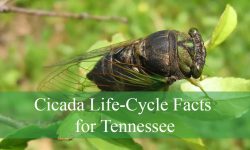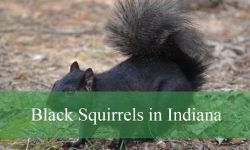Ladybugs remain one of the most noticeable and familiar insects in Illinois. People notice them in gardens, on porch railings, inside window frames during fall warm-ups, and even clustered in attics as winter approaches. Their bright colors and round bodies make them instantly charming, yet these beetles are far more complex than the simple image many people carry.
Across northern prairies, central farmlands, lakeshore woodlands, and suburban edges, Illinois hosts several native and introduced ladybug species. Their behavior shifts dramatically with weather patterns, seasonal changes, and habitat types. Some species thrive in agricultural areas, while others prefer prairies or shaded forests. Still others appear only during certain months and disappear as quickly as they arrived.
Despite how familiar they seem, most Illinois residents only know the basics about ladybugs. What often goes unnoticed is how their populations fluctuate, how their life cycles follow precise patterns, and how their ecological roles extend far beyond garden pest control. This article explores six little-known facts about Illinois’s ladybugs, offering a closer look at the insect behind the bright shell.
1. Illinois is home to both native and invasive ladybug species

When people think of ladybugs, they often imagine a single red beetle with black spots. In Illinois, however, several native species exist alongside the well-known invasive Asian lady beetle. These species vary in size, number of spots, coloration, and habitat preference, yet many residents assume they are all the same insect.
The native nine-spotted lady beetle was once common statewide yet has become rare in recent years. Its decline opened ecological space for other species to expand. In contrast, the convergent lady beetle remains widespread in gardens and fields across the state, especially in agricultural areas where aphids are plentiful. These beetles thrive in both cropped fields and restored prairies, finding food in a wide range of plant communities.
The Asian lady beetle, introduced as a biological control agent, became unexpectedly dominant. Its adaptability and rapid breeding cycles allowed it to spread across Illinois with ease. Unlike native species that typically stay outdoors, Asian lady beetles often overwinter inside homes, leading to common confusion and misidentification. Understanding which is which helps Illinois residents appreciate the diversity hidden behind the familiar red shell.
2. Ladybugs in Illinois change color as they mature
Many people assume ladybugs hatch with their final coloration, but the insects that appear in Illinois gardens have undergone dramatic transformations before reaching adulthood. The bright red or orange shell that people recognize is only the final stage in a complex life cycle.
Ladybug larvae look nothing like adults. Their elongated, segmented bodies resemble tiny alligators, and their dark coloration helps them blend into stems and leaves. After feeding aggressively on aphids for several weeks, the larvae attach themselves to a surface and enter the pupal stage. During this period, their internal structure reorganizes, forming the recognizable dome-shaped adult body.
When adult ladybugs first emerge from their pupal casing, their shells are pale yellow or cream colored. Their spots may not appear immediately, and their soft shells gradually harden over several hours. Over the next few days, their coloration deepens into the reds and oranges that people expect. Illinois residents who spot pale ladybugs in early summer are witnessing a stage that many never realize exists.
These color transitions play an important role in signaling maturity and readiness for feeding. Younger beetles may be less active or slower to respond to predators, while hardened adults become efficient hunters. Observing these subtle differences adds new appreciation to the insects seen regularly across Illinois landscapes.
3. Illinois ladybugs are major predators that help control agricultural pests
Though often thought of as garden helpers, ladybugs play a critical role across Illinois’s extensive agricultural lands. Corn, soybeans, orchards, vineyards, and vegetable fields all benefit from the presence of ladybugs in one way or another. Their appetite for aphids, mites, scale insects, and small larvae makes them essential natural pest controllers.
An adult ladybug can consume dozens of aphids per day. Their larvae eat even more, sometimes clearing entire colonies from plant stems before moving to the next food source. This voracious appetite keeps pest populations in check and reduces the need for chemical interventions, which helps both ecological health and crop stability.
Different species specialize in different environments. The convergent lady beetle thrives in central and southern Illinois’s soybean fields, where aphid outbreaks can quickly stress plants. In contrast, the parenthesis lady beetle is often seen in gardens and prairie restorations, where smaller prey species are abundant. Even the invasive Asian lady beetle, despite being a nuisance indoors, contributes significantly to pest control outdoors during the growing season.
Understanding the role ladybugs play in Illinois agriculture sheds light on why they appear in such high numbers during warm months. Their presence is a sign of a functioning ecosystem that relies on biological balance rather than constant chemical treatment.
4. Ladybugs overwinter in Illinois in huge clusters you rarely see
One of the most surprising facts about ladybugs in Illinois is how they survive winter. Residents often notice Asian lady beetles gathering inside homes, but all ladybug species—including natives—overwinter in clusters. These aggregations can be found under tree bark, in leaf litter, beneath rocks, or inside protected crevices.
What makes these clusters remarkable is their scale. Thousands of ladybugs may gather in a single sheltered space. Their bodies crowd together tightly, forming living insulation that traps warmth. This behavior dramatically increases their chances of surviving freezing temperatures. While only a fraction of the cluster may survive extreme cold, the numbers ensure that the species continues into the next season.
Illinois’s fluctuating winter weather makes these clusters crucial. Warm spells can confuse ladybugs into leaving their shelter too early, only to encounter sudden temperature drops. Native species have evolved strategies to handle these shifts, while the invasive species sometimes misinterpret weather cues. This is one reason why Asian lady beetles enter homes more frequently—they seek stable, artificial warmth during unpredictable conditions.
Most residents never see these large overwintering clusters outdoors. They remain hidden in forest debris or tucked into the cracks of dead trees. Only researchers and naturalists who explore winter habitats closely ever witness the dense gatherings that define ladybug survival in Illinois.
5. Ladybug populations in Illinois fluctuate dramatically from year to year
One summer, Illinois gardens may seem full of red-spotted beetles. The next, ladybugs may appear strangely absent. These fluctuations are completely natural and occur due to a variety of ecological factors that influence population cycles.
The most important factor is prey availability. When aphid numbers surge in spring, ladybug populations grow rapidly. Abundant food means more larvae survive, more adults reproduce, and more generations emerge within a single season. Conversely, when prey species crash because of drought, heavy rains, or temperature extremes, ladybug numbers drop accordingly.
Weather patterns also play a major role. Late frosts can kill early-emerging ladybugs, while unusually wet springs may reduce the number of insects they rely on for food. In prairie regions, fire management practices influence habitat availability. Controlled burns, essential for prairie restoration, temporarily reduce overwintering sites, leading to smaller early-season populations.
These fluctuations often cause Illinois residents to wonder why ladybugs seem “missing” some years. In reality, ladybug populations respond closely to broader ecological rhythms. Observing these patterns is one way to understand the health of local ecosystems and the delicate balance that supports insect diversity in the Midwest.
6. Illinois hosts some species that don’t look like typical red ladybugs
Many people in Illinois remain unaware that not all ladybugs are red with black spots. Some species are yellow, orange, cream, pink, or even black. Others have no spots at all. These lesser-known ladybugs appear in prairies, oak savannas, woodlands, and agricultural margins throughout the state.
For example, the polished lady beetle is a shiny black species with two bright red spots. It often goes unnoticed because people don’t associate dark beetles with typical ladybug appearance. The twenty-spotted lady beetle is tiny, cream colored, and patterned with intricate brown spots. This species prefers fungi over aphids, a dietary shift that surprises many naturalists.
Even more unusual is the multicolored Asian lady beetle, which can appear in shades ranging from orange to mustard yellow to deep red. Some individuals have many spots, some have few, and some have none. This wide variation contributes to misidentification and confusion, especially in fall when large numbers gather on sunlit walls.
Recognizing the diversity of Illinois ladybugs helps residents understand that these insects occupy a wide range of ecological niches. Their many colors and patterns reflect a spectrum of habitats and behaviors that extend beyond the familiar garden version. Exploring this diversity reveals how adaptable and ecologically important these small beetles truly are.
Frequently Asked Questions
Why do ladybugs come into houses in Illinois?
Asian lady beetles often enter homes seeking stable temperatures for overwintering. Native ladybugs typically overwinter outdoors in natural clusters.
What do Illinois ladybugs eat?
Most feed on soft-bodied insects such as aphids, mites, and small larvae. A few species specialize in fungi rather than living prey.
Are ladybugs harmful?
Native ladybugs are harmless and beneficial. Asian lady beetles may bite when handled and can stain surfaces, but they do not cause structural damage.
Why do ladybugs appear in huge numbers some years?
Population booms occur when aphid numbers rise and weather conditions are stable. Ladybug reproduction increases rapidly during these periods.
Are all ladybugs in Illinois red?
No. Illinois hosts many species, including yellow, orange, cream, pink, and black variants. Some have many spots, others have none.
Do ladybugs live long?
Most ladybugs live for about one year. Some adults survive through winter and reproduce the following spring.
How can I identify the Asian lady beetle?
Asian lady beetles often have an “M-shaped” marking behind the head and may appear in many color variations, from yellow to deep red.
Are ladybugs good for gardens?
Yes. They help control pests like aphids and mites. Their presence often indicates a healthy, balanced garden ecosystem.
Can ladybugs fly long distances?
Ladybugs can fly surprisingly far when searching for food or overwintering sites. Wind currents can carry them across large areas.
Do ladybugs bite?
Asian lady beetles may nip when handled, but the bite is mild and not dangerous. Native species rarely bite.
Final Thoughts
Ladybugs are a familiar part of life in Illinois, yet their true nature is more complex than their colorful shells suggest. They live through dramatic life cycle changes, influence agricultural health, adapt to shifting climates, and display surprising diversity across the state. Their hidden behaviors, fluctuating populations, and seasonal rhythms make them an essential part of Illinois ecosystems.
Understanding these insects deepens appreciation for the natural world that thrives alongside homes, parks, and farmlands. Whether you spot them clustered on a warm autumn day or hunting aphids in a summer garden, ladybugs reveal how even small creatures play large roles in ecological balance.






